Upon seeing the apparently brand new boat, I immediately took out my cell phone and called a number: “Could this be your new boat?”, I asked the guy at the other end. “Yepp, she is it!”, confirmed the voice of a young man. If I´d see it to make an article, I went on asking. No problem, assured the man and a day later – sunny sky with dramatic autumn clouds – we met in person. The guy is Hendrick Decker, a tall, blond, energetic, always brightly smiling young lad – the prototype of a surfer´s guys, I shall say.
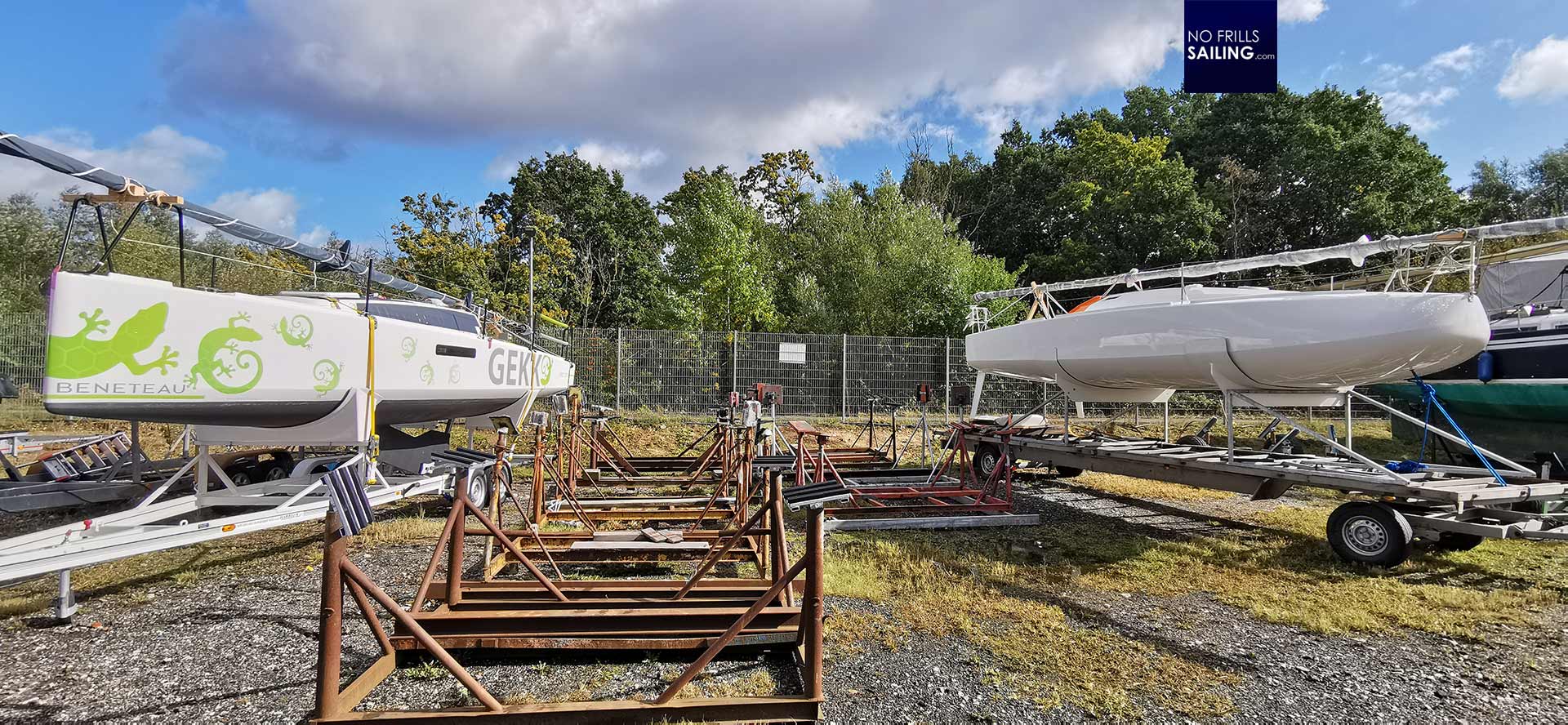
His new boat: A Vector Mini 6.50 racer. Brand new, freshly imported from the yard and parked at the marina, by chance, right next to GEKKO. I was there to fix her on the trailer to make her transport-ready for getting her ack to our yard for completing the last tasks before finally handing her over to her new owners. How lucky am I, have I thought, having this brand new racing boat right next to me. Happy that Hendrick found some time to show me around, I was keen on inspecting how a Classe Mini 6.50 racing boat arrives when newly built.
The Scow-bowed Mini racer
The Vector 6.5 is the latest generation series production Classe Mini 6.50 racer. The boat has been designed by Frenchman Etienne Bertrand in 2017, entering that year´s edition of the Mini Transat race as a prototype, finishing off at an impressive second place. The boat displays latest downwind running optimized hull with an impressive scow bow.
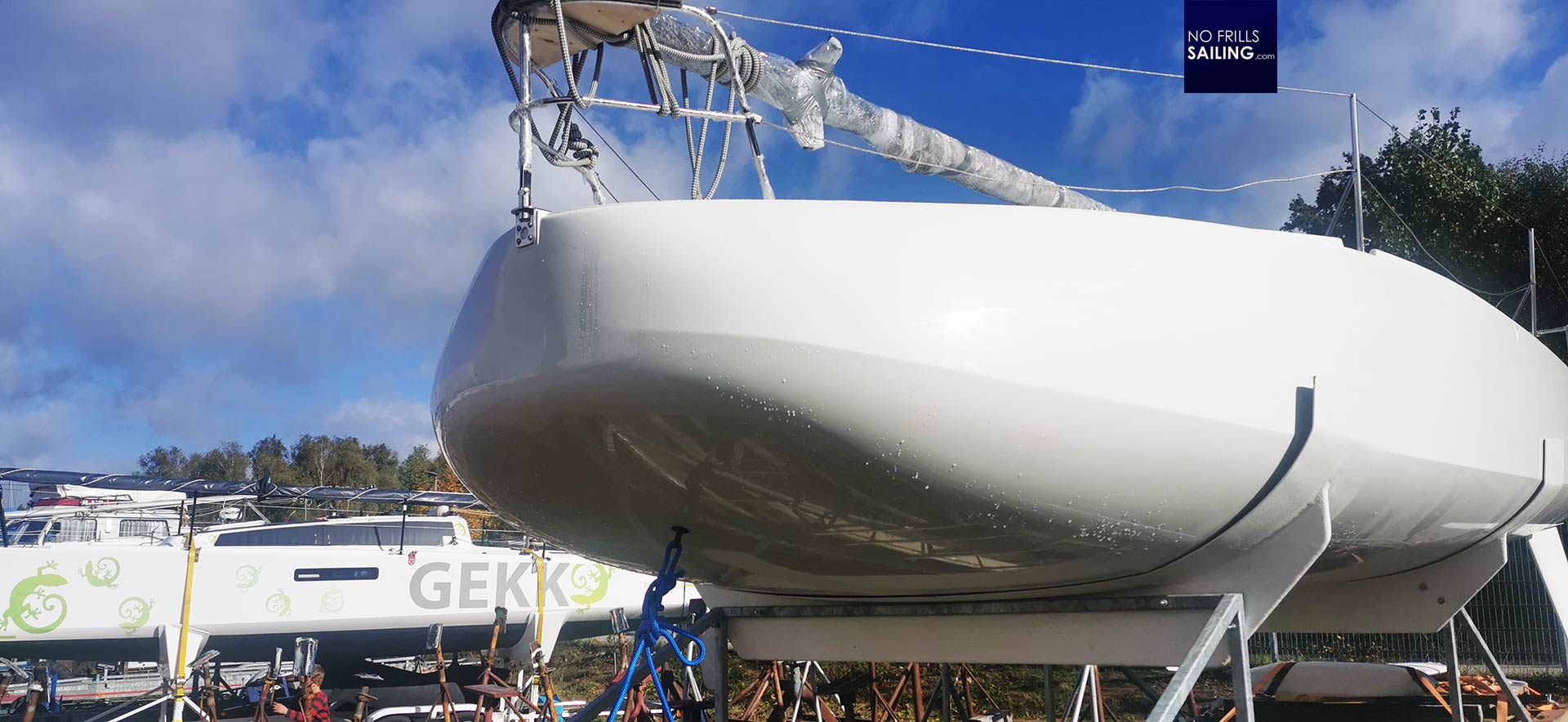
Hendrick smiles brightly as he places a half-emptied bottle of Coce on the trailer: “Yesterday´s regatta celebration went a bit off …”, he smiled half excusatory: “45 knots of wind and a 3 meter wave, it was fun.” Hendrick is a thoroughbred racer. Sailing since he was a small kid, his father´s big cruising boat in a yard´s shed just a few hundred meters away. Hendrick sails races since ever, his old boat, PLAYGIRL, being a used Vector Mini racer, sold months ago: “I am happy to having finally received the new boat”, he reveals: PLAYGIRL 2 is about to be re-located to a shed he rented nearby for finishing.
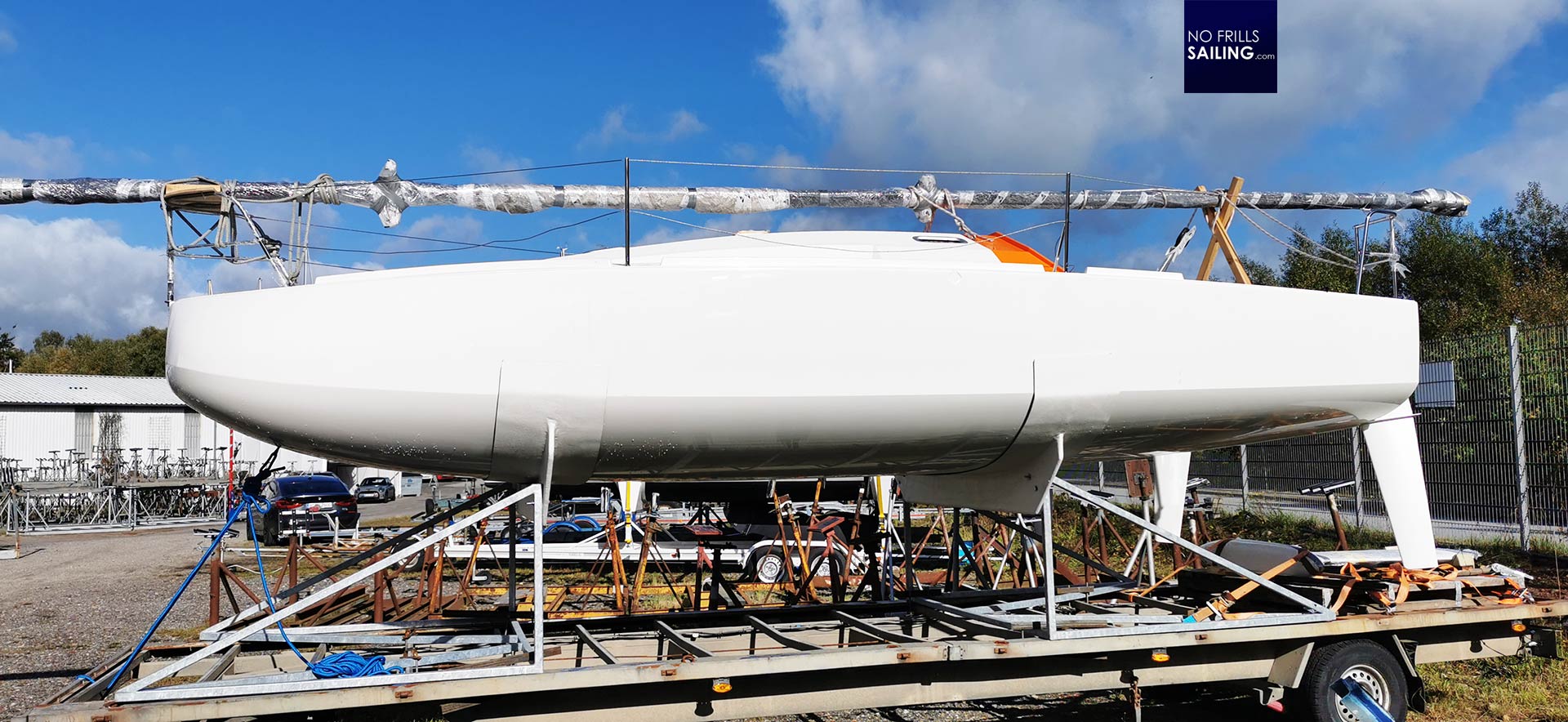
As a Class Mini boat, the box rule of the class dictate measurements and appearance: At 21 feet length the boat must have a minimum freeboard of .75 centimeters and a maximum draft of 2 meters. The rule also dictates, that the mast could not be taller than 12 meters.
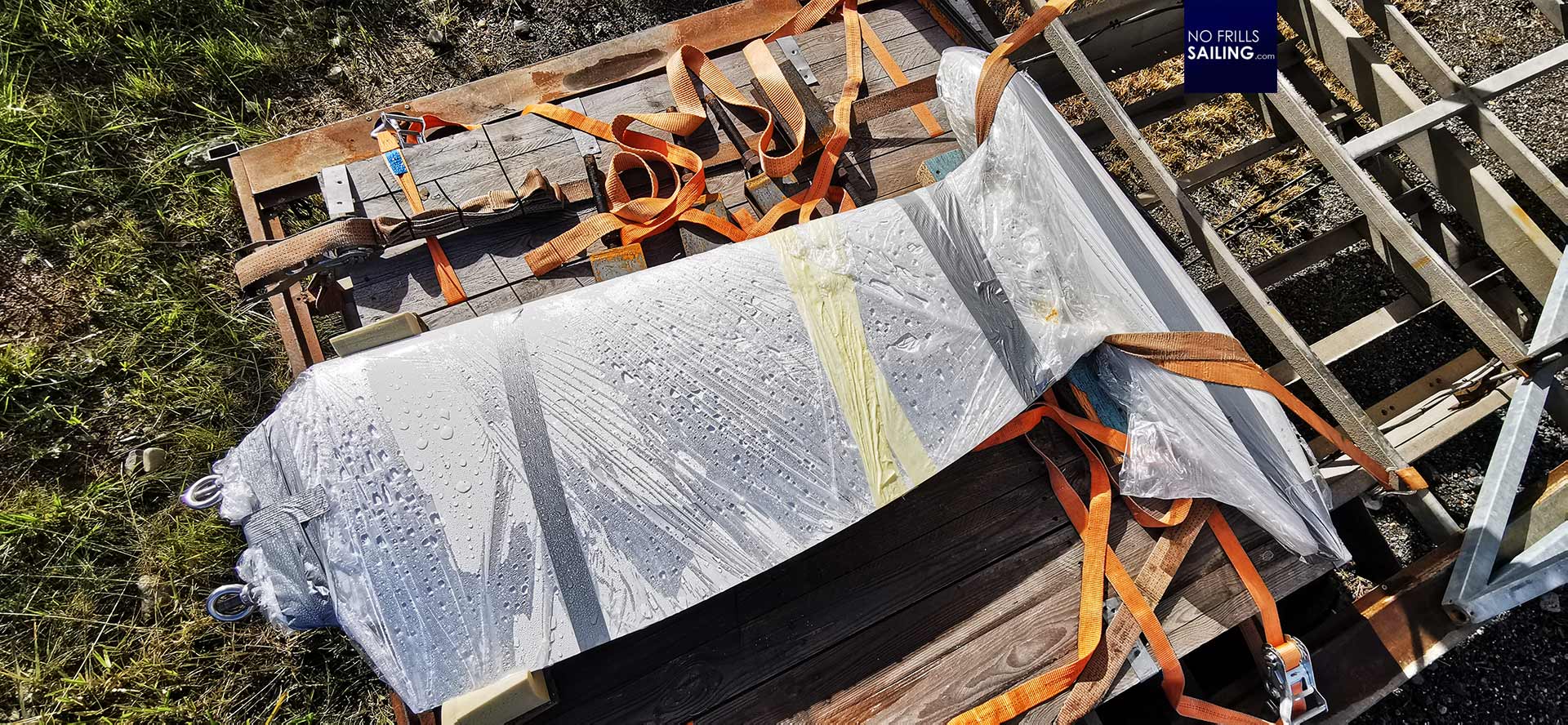
Deep down, still strapped to the improvised trailer, lies the keel. That’s a solid piece of metal: Cast iron fin and a lead T-bulb. Hendrick smiles as I touch the keel: “I am wondering of switching from series boat to prototype”, Hendrick says: “There´s much more possible on these boats, like a canting keel for example.”
Improvements for planning
Nevertheless, even with “only” a series production boat, his new vector 6.5 Mini has some nice improvements over his past boat. He shows a little but interesting detail: The trailing edges of his rudder blades still not “tuned” (like I did on my own boat, he points to a small fin.
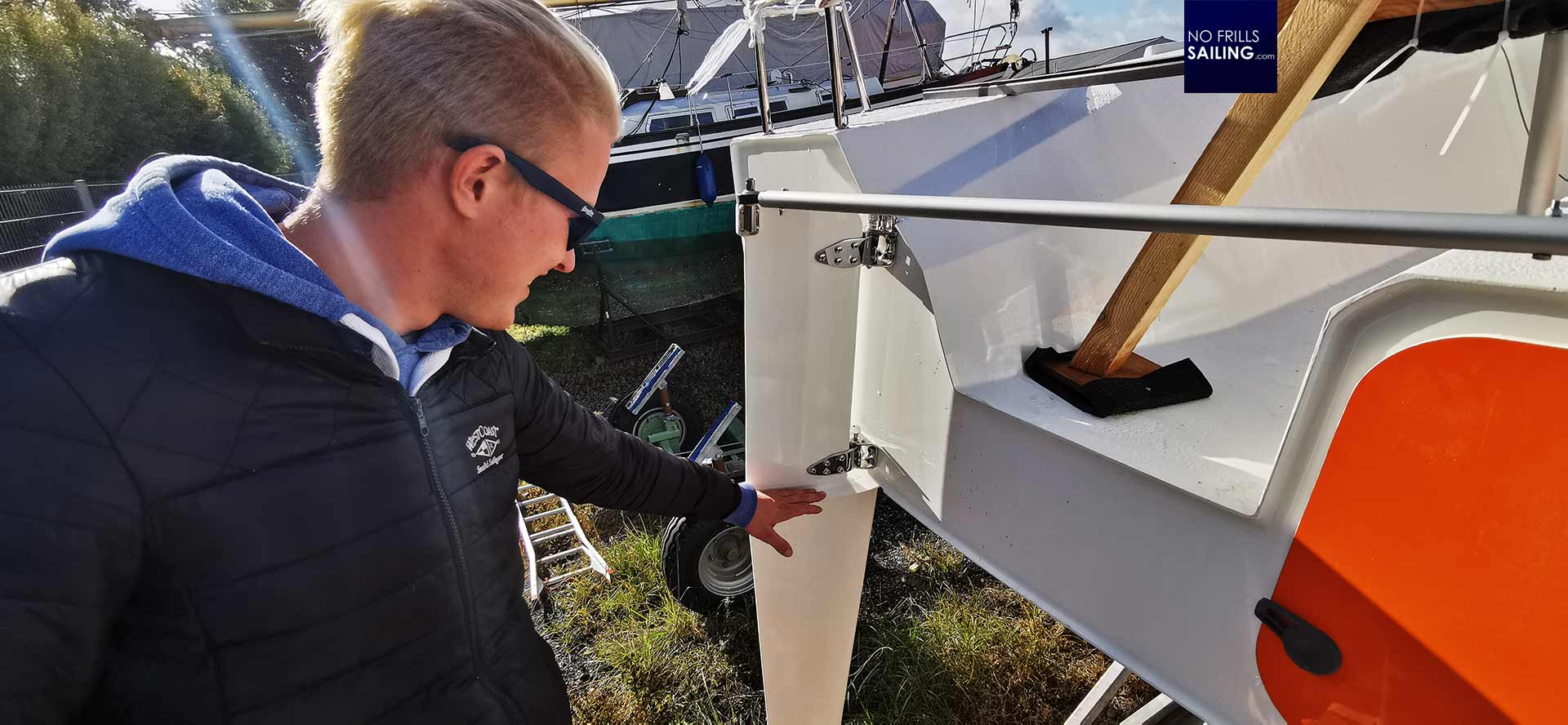
This is new, for example, in this latest version. When planning, it´s the front side of the rudder blade right here where it cuts into the water, where a small wave is created. This wave constantly grabs a firm hold onto the boat´s stern, thus creating some drag that costs speed.
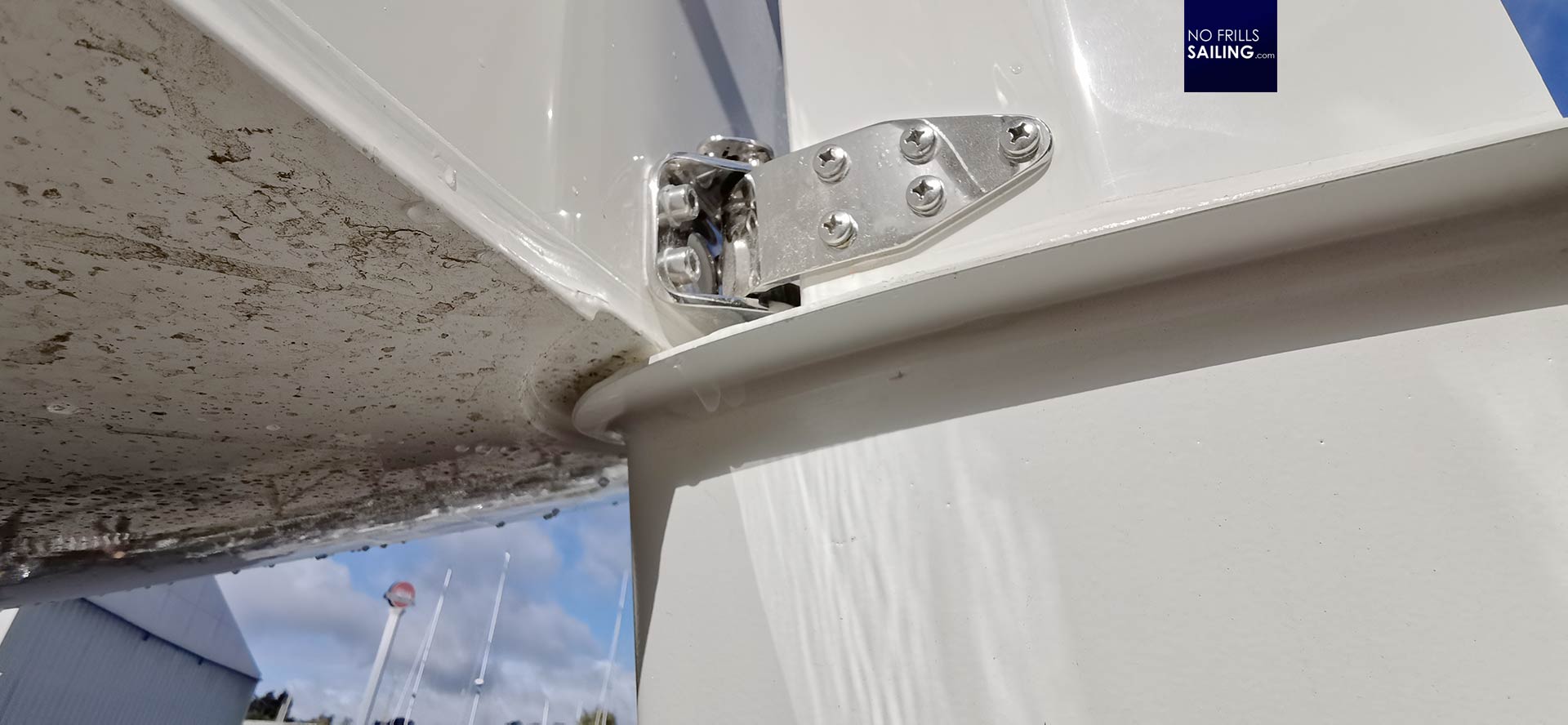
The designer of this boat came up with a small horizontal insert that kind of separates the wet downside of the blades from the stern and is meant to divert the water coming up from the blade to shoot away aft. I find this detail is a great example of what we are talking about here: A serious racing machine meant to wind races. In total, what might be the real net gain of having those small “breaker fins” versus not having them? A hundredth of a knot? But it is the sum of all improvements, every gram spared, every bit of drag reduced, tat makes the difference over hundreds of miles sailed – and hence, the win. Or the loss.
A little big boat
Hendrik climbs on the trailer and into the boat´s cockpit, I follow. The boat is a “Mini” in the closest sense of the word indeed. Six and a half meters is pretty short. Nevertheless, the cockpit itself does not feel all too small, I shall say.
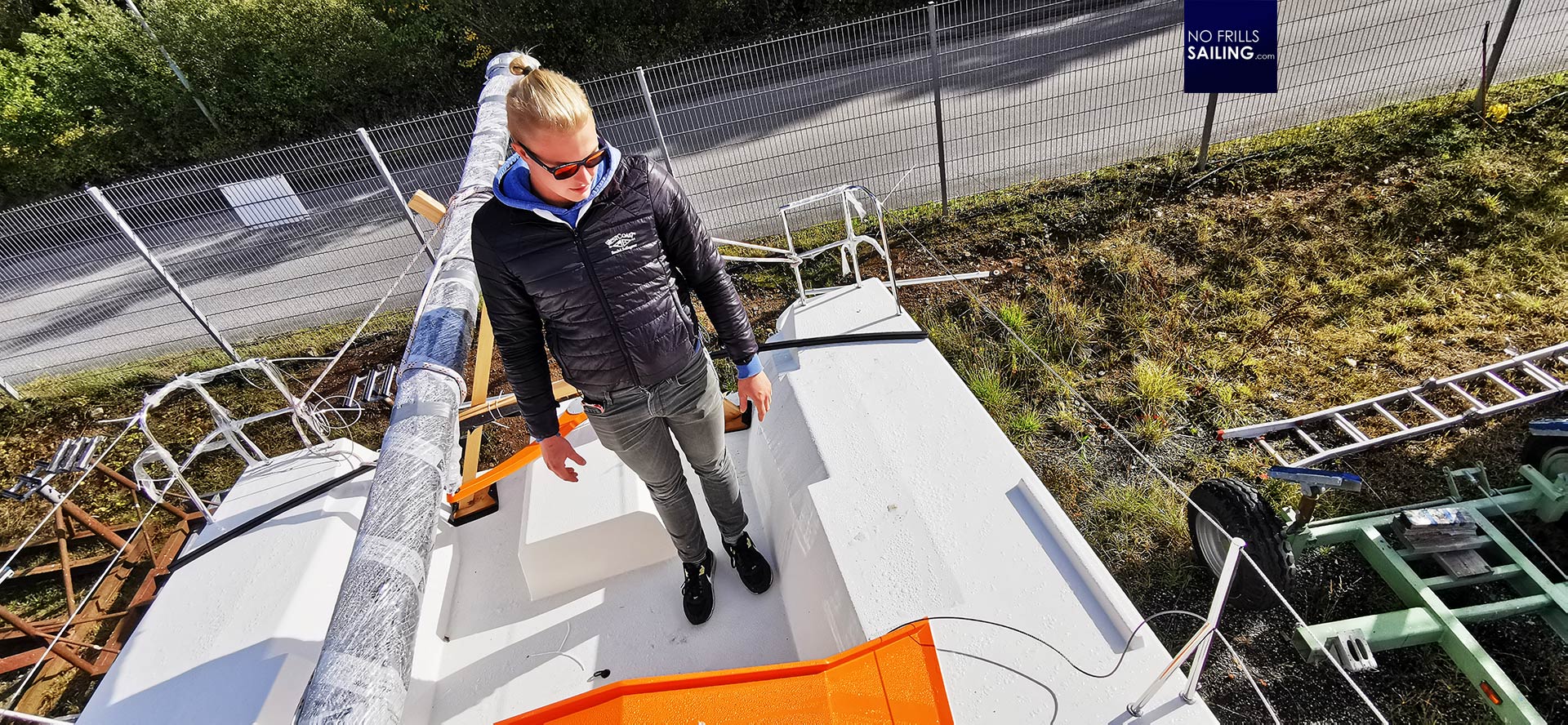
With a width of three meters the Mini is half a meter wider than my old First 27 SE which had a beam of 2.54 m. Even her cockpit felt nice and roomy. I look to the bow and contemplate the enormous area the boat´s deck covers: Since it is a scow bow-boat, it bears much more volume than, let´s say a comparable J-Boat that is much thinner.
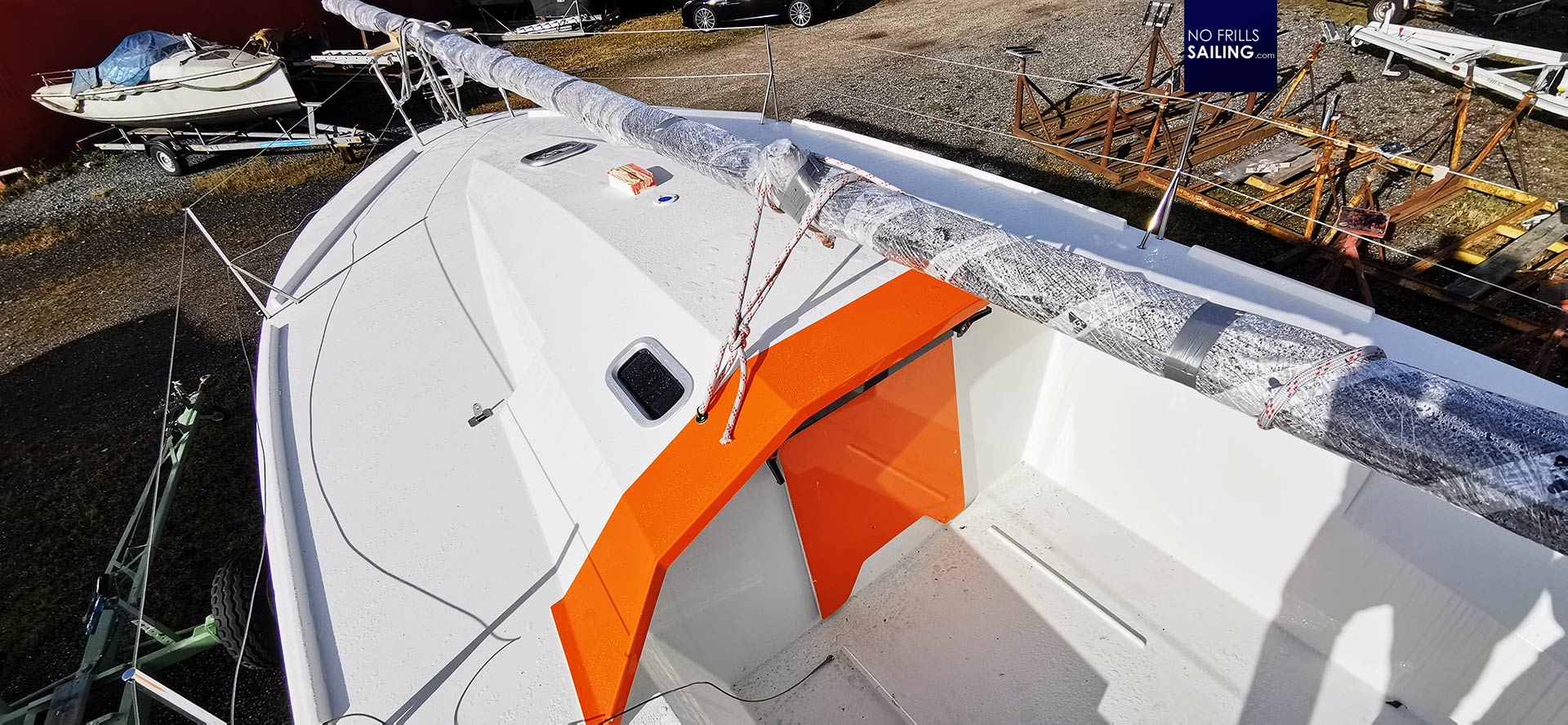
In essence, the Classe Mini-boats is a pure downwind-optimized class. These racing machines are meant to easily take off and start planning mode very early. Upwind sailing capabilities, Hendrik confirms this, are “pretty adventurous”, as he names it. I shall say, these boats are made for reaching points of sail and those alone. Like a giant surf board made to glide above the water.
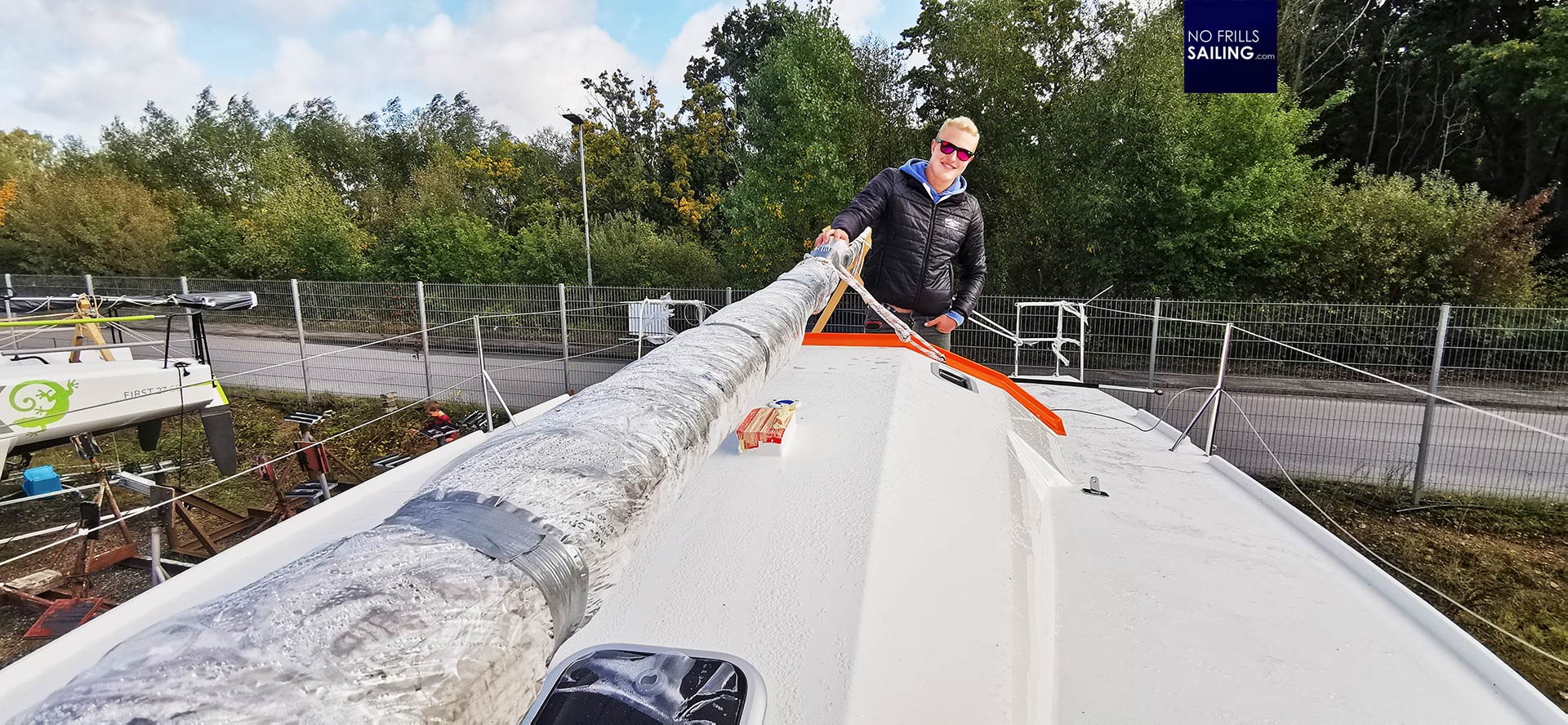
The hull including mast, standing and running rigging, is around 50.000 Euros ex VAT. This is a surprisingly low price, I wonder, since the boat is made with infusion technology and 3D core foam. High tech materials and production methods. Yet, Hendrik needs at least the same budget again to be spent on sails, deck gear and financing his Mini Transat campaign: “I work hard for coming up with all the money, but a sponsor taking on at least a part, naturally, would be great of course!”
Totally costumizeble
And such a future sponsor will get a pretty darn good skipper: Hendrik is a keen regatta sailor and – at least for the Baltic Sea, there is seldom a race he misses. “We will see”, he says and shoots out a winning smile: “There´s plenty of time. I am going to customize the boat to my needs over winter. For that, I´ve rented a shed where the boat will be transferred to.” Hendrik places himself on the port side at the helm.
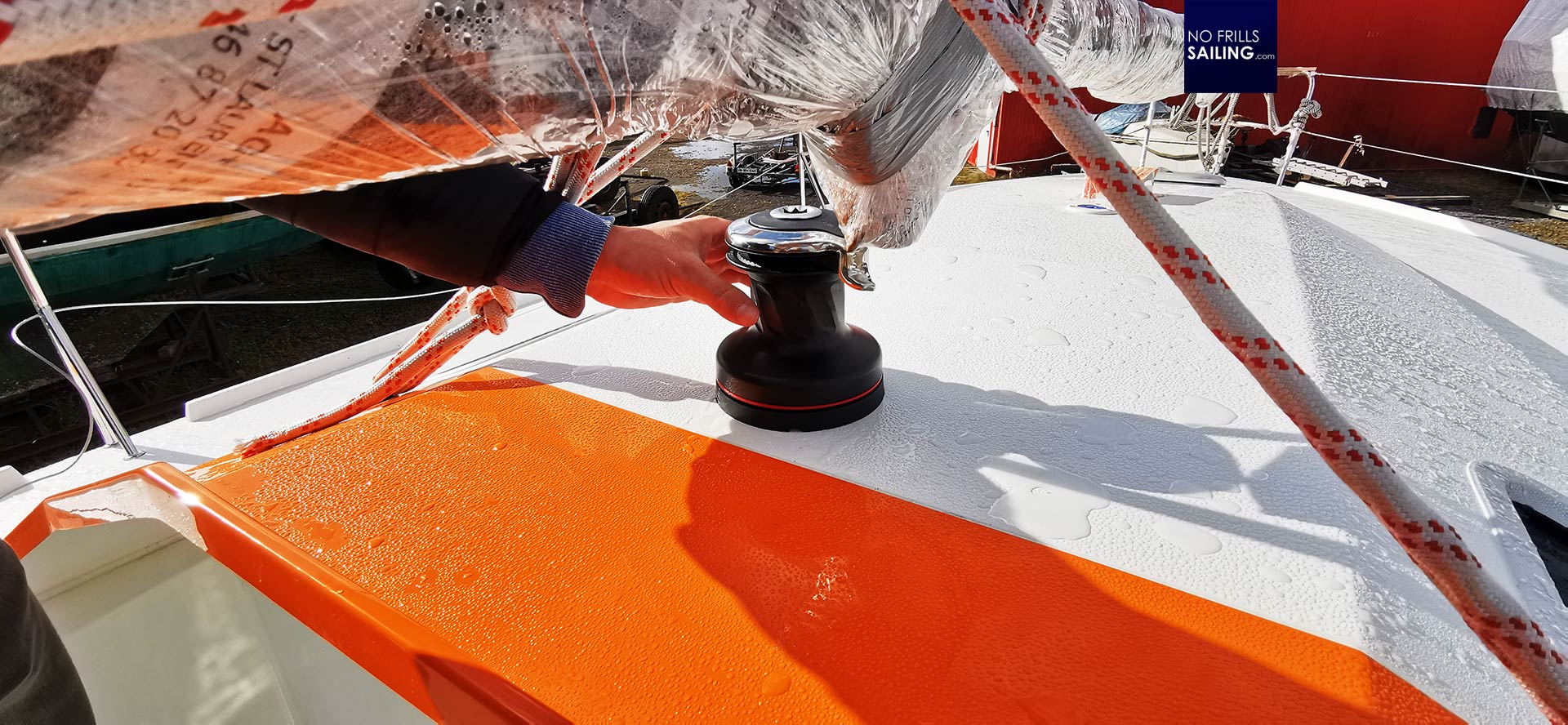
The Vector 6.5 can be bought ”naked”. Skilled boat builders and sailors like Hendrik can now decide where to put the winches, where to put the cleats and all gear. In this, the boat can be tailor-fit to the needs of the skipper´s very own body. Again, how much time can be saved by a winch that does not require to change seating position when working on the lever? A thousandth of a second? Yet, how many times over does a skipper have to fine trim the sails … multiplied by the thousands of miles in a Mini Transat race. A lot of gain.
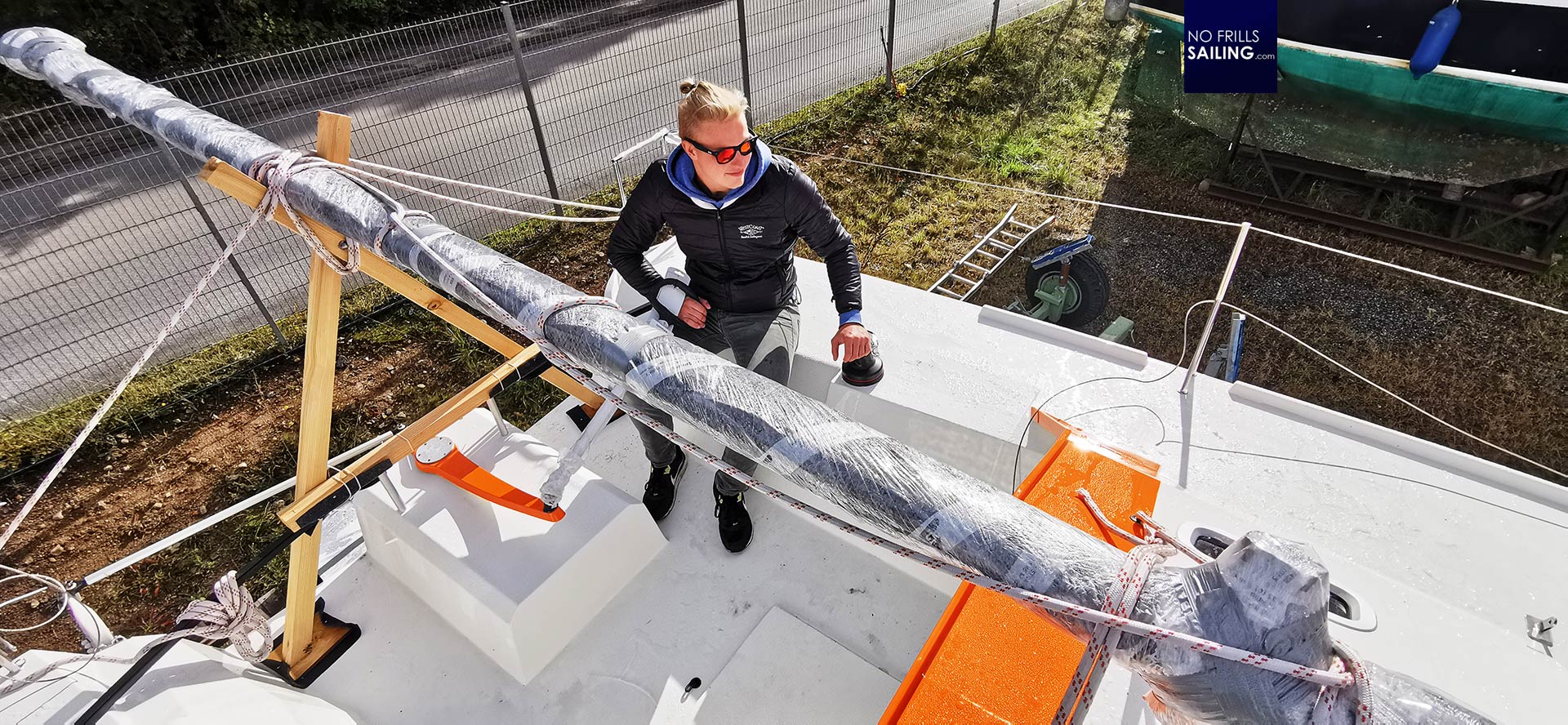
The boat will receive a central winch on the dodger and two Genoa-winches on the coaming. The mainsheet traveler has already been mounted by the yard, but according to the wishes of Hendrik. “On the old boat the traveler was positioned right in front of the entryway down, which was always a hustle having to go around the mainsheet when working the piano, now it´s much better.” Again, these subtle changes adding to the formula of winning a race or not.
Series boat versus prototype
“Still, a prototype would be even cooler”, he says. Why?, I ask: Just having a carbon made boat won´t make so much difference, or will it? “Well, just being admitted into the starting field with a series boat is a gamble. There are much more applicants than places. With a prototype, your starting place is almost safe”, Hendrik says. Secondly, he explains, the carbon-made Mini 6.5 is much light which directly translates into speed.
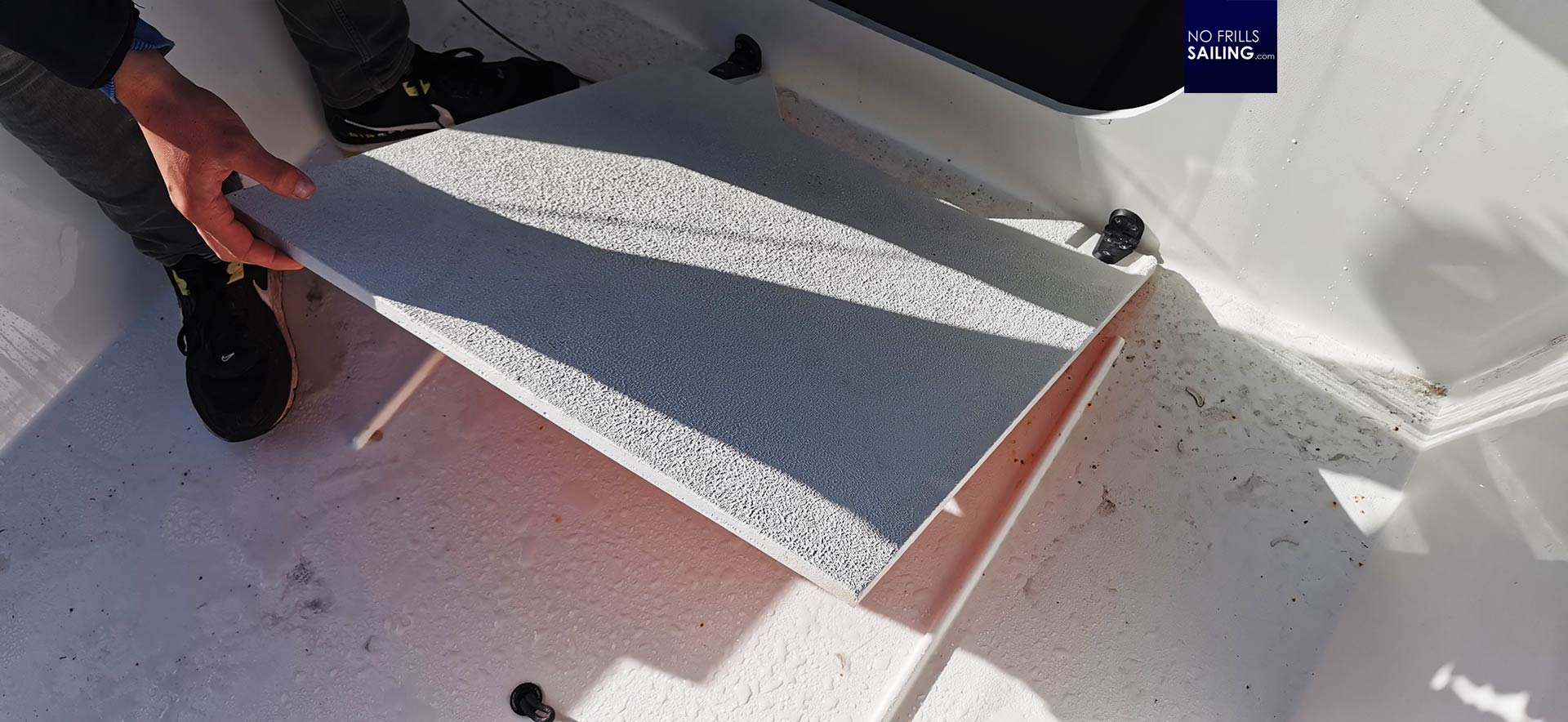
“Plus”, he says with a glow in his eyes, you can play around with many much, much cooler things: “Like you get a taller mast, ergo more sails area. Like the canting keel, which give you more power on the tougher points of sails. Or just take the whole topic of foils: This is something I would find absolutely amazing to have a foiling Mini!” He opens the entry to the boat´s interior and invites me to check it out.
Welcome to the inside
The Vector 6.5 comes with a slightly overhang dodger that also has a mini-wave breaker. “This is also new in regard to the former version. I hope that the amount of spray water in foul weather is at least reduced”, he smiles: I know very well by myself how nasty even the tiny Baltic Sea can get at times …
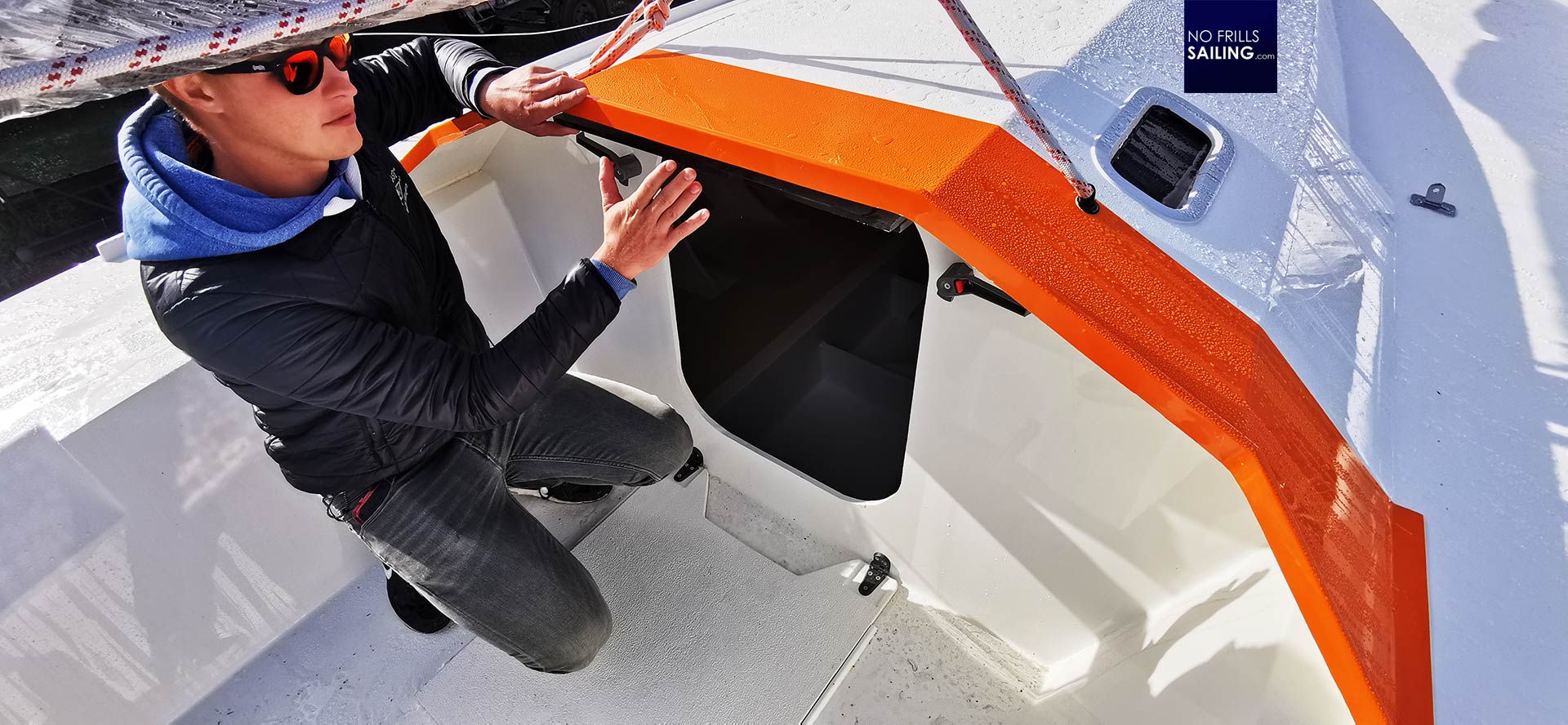
My first look into the inners of the Vector 6.5 is accompanied by a “Wooow!” The boat is just huge! And here I can clearly see what the huge deck area promised: The volume created inside is just amazing. The “saloon”, if one could call it this way, is even bigger than the counterpart on my old First 27 SE. The nice yellow-ish light that shines through the 3D-foam core creates a wonderful atmosphere. No need for any Top Coat-paint.
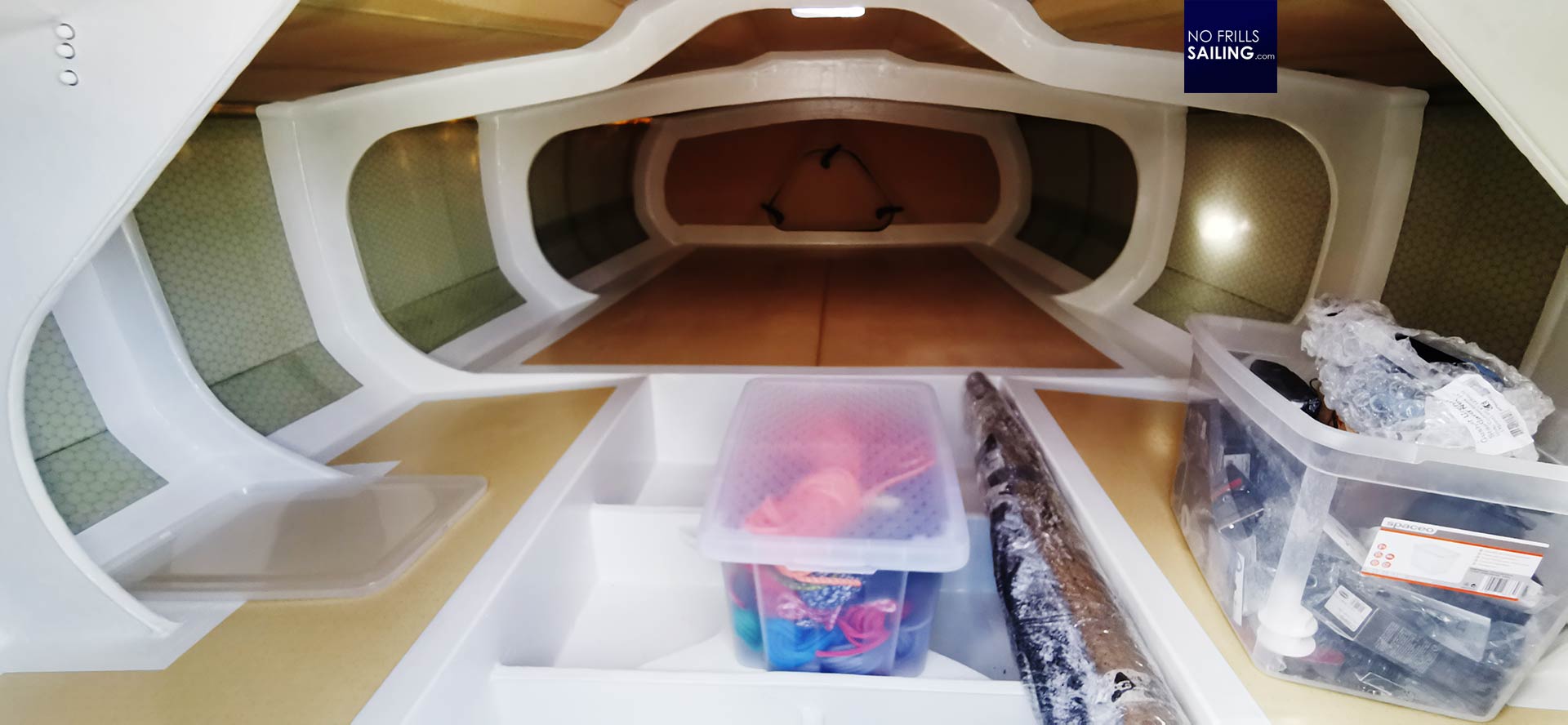
The Vector 6.5 has three watertight foam-filled chambers which, if the boat flips, gets struck by a reef or has a leak. “It shall swim safely on the water even when filled to the brim by the Ocean.”, he smiles. I love the forward compartment of the boat, directly in the bow: The scow-bow allows for huge volume underneath – I´d say any King-size bed in hotel rooms could hardly be offering more area.
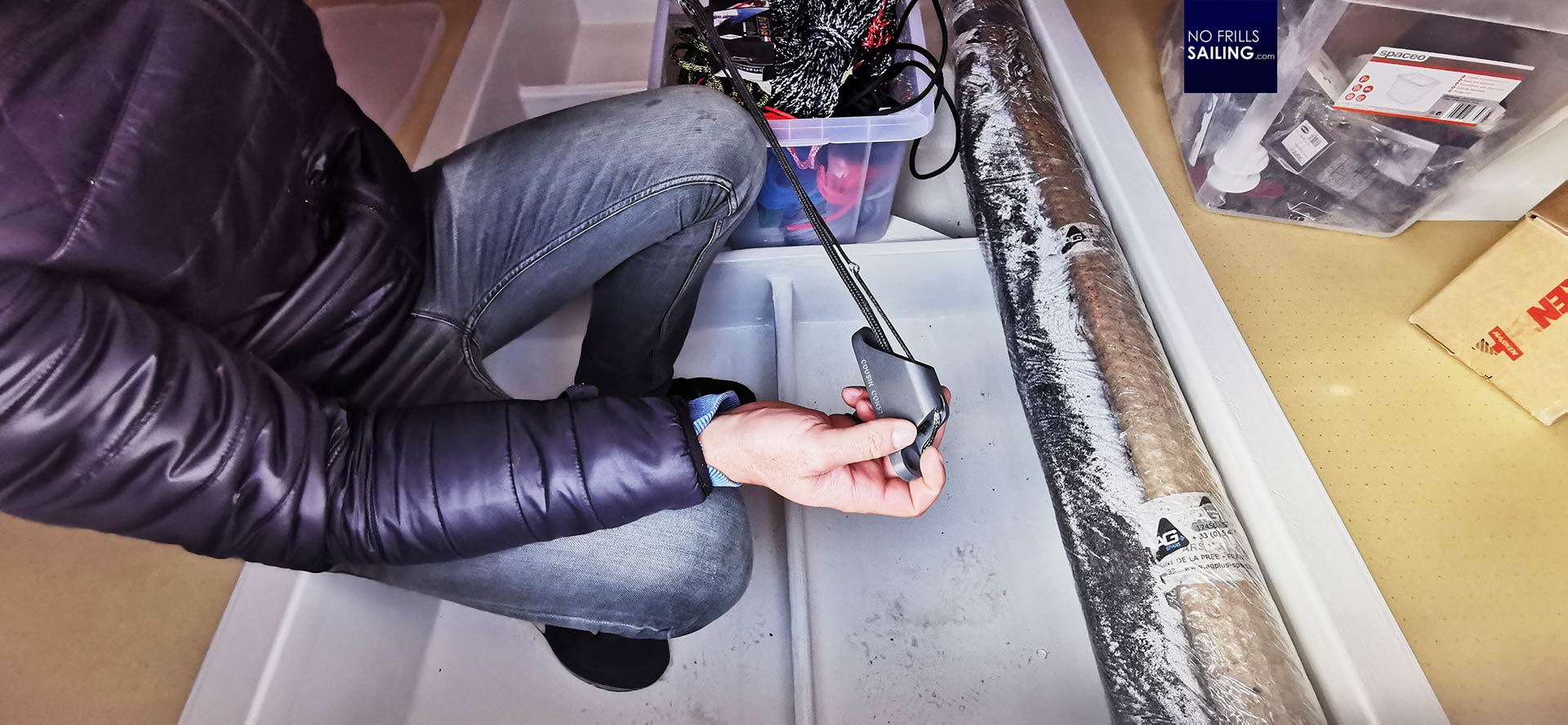
Hendrik shows some of the parts he bought: “I decided to get me some cool stuff, like those constrictor-clutches. They are not only cool looking but also much more kind to the material.” Hi plan is to relocate the boat in the coming weeks to start working over winter: Having her clear and ready to begin his regatta-season in 2023 on spot.
Hendrik´s fundraising campaign
“Still a long way to go”, say Hendrik who is well aware of the current situation: With a looming recession and news of crisis everywhere, inflation like a bad vortex beginning to pull more and more companies in, raising a budget to support his way to the Mini Transat gets even harder. “But I am confident that I can come up with a solution here.” He smiles. There´s no turning back, the boat is bought and for Hendrik it´s not if but how he will hoist his sails next year.
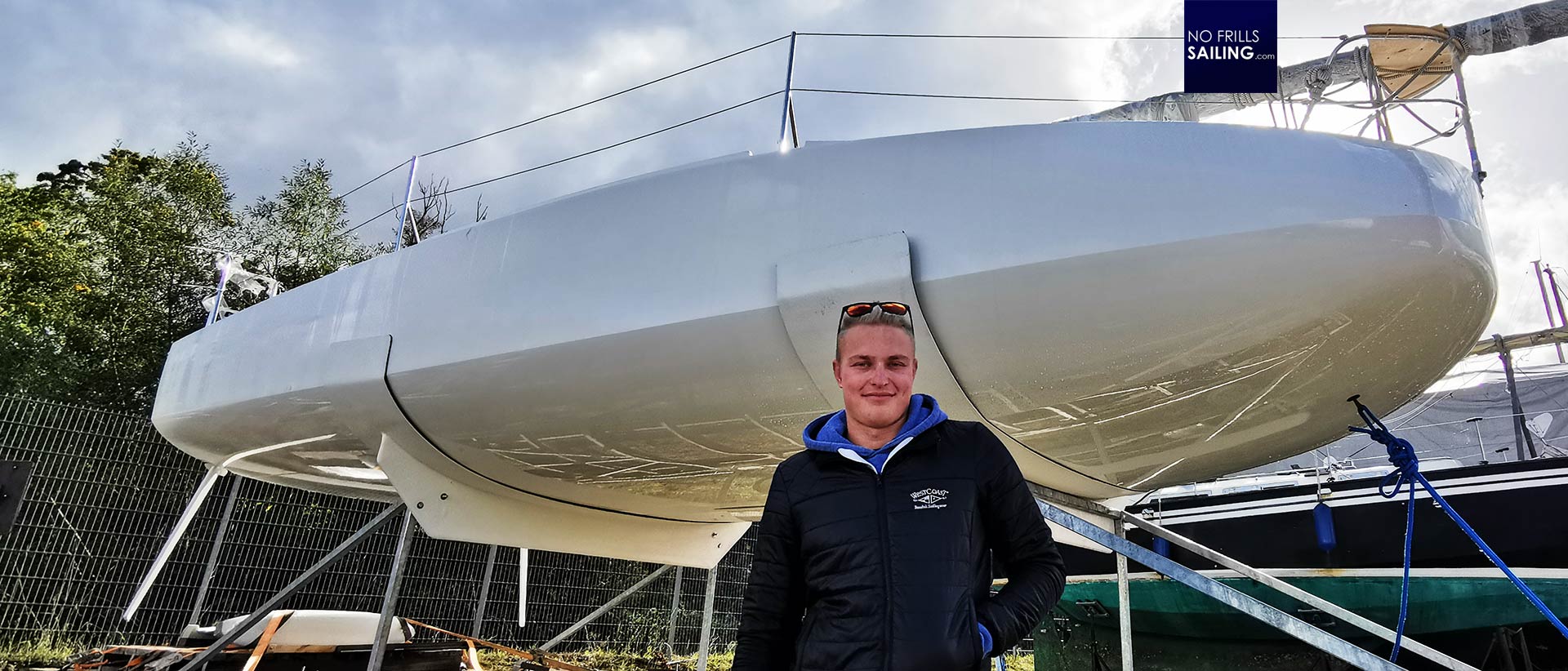
This cool young dedicated man! We say Goodbye and whilst we shake hands Hendrik promises me to take me with him in his brand new PLAYGIRL 2 when ready to sail next spring. Hoping that he will find a way to raise the budget needed to support his dreams of competing at Mini Transat, we part. I drive away and see him climbing onto his boat again in my driving mirror: Surely, he is going to work for an hour or two on his boat to fit some parts. How cool must it be to be young again, I think to myself, and being so close to make a dream come true!
Classe Mini 650: Here is some more fuel for you:
PLAYGIRL: Hendrik Decker´s fast Mini racer
Endgame Mini Transat: Lisa Berger sets full canvas to her dream
Lizzy Foreman on the Mini Transat race
